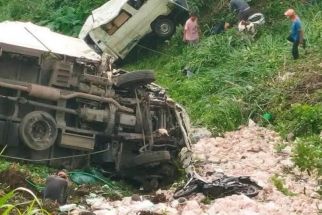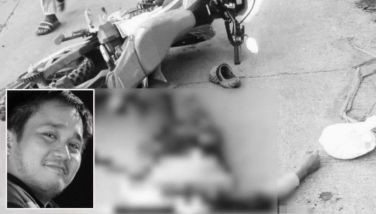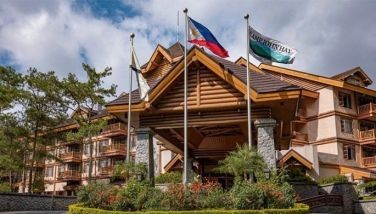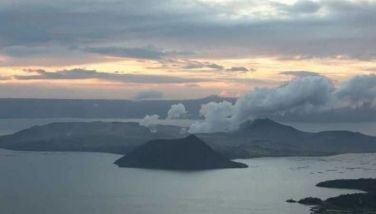Pampanga town commemorates birth of ‘kamikaze’
October 26, 2000 | 12:00am
MABALACAT, Pampanga  History descended anew upon this town yesterday as Japanese visitors, led by Buddhist Bishop Ekan Ikeguchi, joined the commemoration of the 56th anniversary of the birth in Barangay San Francisco here of the "kamikaze," the suicide attack units of the Japanese imperial forces which took action against American forces starting in Leyte in October 1944.
"It was the largest suicide organization in world history," said prominent historian Daniel Dizon, 70.
Dizon said some 6,500 Japanese soldiers immolated themselves by crashing their aircraft against US warships in kamikaze missions.
No less than 16,000 Japanese soldiers volunteered to sacrifice their lives for these suicide missions, Dizon said.
While local officials marked the birth of the kamikaze yesterday, Dizon said it was actually on the morning of Oct. 20, 1944 that the 201st Air Group of the Japanese Air Force announced the formation of the Shimpu attack unit.
The first successful mission was carried out five days later on Oct. 25, when Japanese pilots disabled US warships in Leyte.
Dizon said the Japanese referred to the mission as kamikaze or "divine wind" with reference to a typhoon that saved Japan from the invasion of Kublai Khan in 1281.
Through years of research, Dizon was able to get first-hand testimonies about the birth of the kamikaze from two key kamikaze officers who were among the initial batch of suicide bombers in this town  Capt. Rikihei Inoguchi and Commander Tadashi Nakajima.
Inoguchi recalled that on Oct. 17, 1944, "American ships appeared off Suluan Island at the mouth of the Leyte Gulf, in such force as to indicate that a major invasion operation was about to begin."
Two days later, Admiral Takijiro Ohnishi arrived here to announce the activation of the so-called "Sho operation," a defensive-offensive plan, amid reports that US forces had targeted the Philippines for invasion.
The following day, the 201st Air Group posted at its headquarters in Barangay San Francisco here an announcement on the formation of the Shimpu suicide attack unit. The slogan: "One plane for one warship."
The unit was to be composed initially of 26 fighter planes, of which half were assigned for suicide diving missions and the rest for escort. Each aircraft was equipped with 250-kilogram bombs.
Inoguchi recalled: "The members of the 201st Air Group  young veteran pilots  were asked if they would volunteer to become suicide pilots. In a frenzy of emotion and joy, the shouts of every pilot in the assembly went up in a gesture of complete accord." Kamikaze was then born to spread its mission to the rest of the Asia-Pacific as World War II drew to a close.
Dizon quoted US Navy Vice Admiral C.R. Brown as saying later: "No one has as yet successfully explained to the Western mind this Japanese phenomenon of self-immolation, and perhaps it is not given to the Westerner to understand it."
But the sentiments of the kamikaze pilots could probably be gleaned from the letters they sent their loved ones before they went on to their last missions. The letters were compiled by Dizon.
Twenty-two-year old Ensign Heiichi Okabe of Kyushu wrote: "I am a human being and hope to be neither saint nor scoundrel. As one who has spent his life in wistful longing and searching, I die resignedly in the hope that my life will serve as a human document."
To his parents, Flying Petty Officer First Class Isao Matsuo of Nagasaki wrote: "Please congratulate me. I have been given a splendid opportunity to die. This is my last day. The destiny of our homeland hinges on the decisive battle in the seas south, where I shall fall like a blossom from a radiant cherry tree."
One Teruo also had no regrets for volunteering his life as a kamikaze pilot, as he wrote his father: "As my death approaches, my only regret is that I have never been able to do anything good for you in life. . . My grave will be the sea around Okinawa, and I will see my (deceased) mother and grandmother again. I have neither regret nor fear about death. I only pray for your happiness and that of my countrymen."
Noting a growing historical interest in the Japanese occupation of the Philippines, Dizon has put up a kamikaze museum at his home at No. 2 Badjao st., Villa Gloria, Angeles City.
The museum features Dizon’s collection of an original kamikaze pilot uniform, a special steel sword given only to kamikaze volunteers, and portraits of the first five kamikaze pilots killed in suicide attacks.
"It was the largest suicide organization in world history," said prominent historian Daniel Dizon, 70.
Dizon said some 6,500 Japanese soldiers immolated themselves by crashing their aircraft against US warships in kamikaze missions.
No less than 16,000 Japanese soldiers volunteered to sacrifice their lives for these suicide missions, Dizon said.
While local officials marked the birth of the kamikaze yesterday, Dizon said it was actually on the morning of Oct. 20, 1944 that the 201st Air Group of the Japanese Air Force announced the formation of the Shimpu attack unit.
The first successful mission was carried out five days later on Oct. 25, when Japanese pilots disabled US warships in Leyte.
Through years of research, Dizon was able to get first-hand testimonies about the birth of the kamikaze from two key kamikaze officers who were among the initial batch of suicide bombers in this town  Capt. Rikihei Inoguchi and Commander Tadashi Nakajima.
Inoguchi recalled that on Oct. 17, 1944, "American ships appeared off Suluan Island at the mouth of the Leyte Gulf, in such force as to indicate that a major invasion operation was about to begin."
Two days later, Admiral Takijiro Ohnishi arrived here to announce the activation of the so-called "Sho operation," a defensive-offensive plan, amid reports that US forces had targeted the Philippines for invasion.
The following day, the 201st Air Group posted at its headquarters in Barangay San Francisco here an announcement on the formation of the Shimpu suicide attack unit. The slogan: "One plane for one warship."
The unit was to be composed initially of 26 fighter planes, of which half were assigned for suicide diving missions and the rest for escort. Each aircraft was equipped with 250-kilogram bombs.
Inoguchi recalled: "The members of the 201st Air Group  young veteran pilots  were asked if they would volunteer to become suicide pilots. In a frenzy of emotion and joy, the shouts of every pilot in the assembly went up in a gesture of complete accord." Kamikaze was then born to spread its mission to the rest of the Asia-Pacific as World War II drew to a close.
Dizon quoted US Navy Vice Admiral C.R. Brown as saying later: "No one has as yet successfully explained to the Western mind this Japanese phenomenon of self-immolation, and perhaps it is not given to the Westerner to understand it."
Twenty-two-year old Ensign Heiichi Okabe of Kyushu wrote: "I am a human being and hope to be neither saint nor scoundrel. As one who has spent his life in wistful longing and searching, I die resignedly in the hope that my life will serve as a human document."
To his parents, Flying Petty Officer First Class Isao Matsuo of Nagasaki wrote: "Please congratulate me. I have been given a splendid opportunity to die. This is my last day. The destiny of our homeland hinges on the decisive battle in the seas south, where I shall fall like a blossom from a radiant cherry tree."
One Teruo also had no regrets for volunteering his life as a kamikaze pilot, as he wrote his father: "As my death approaches, my only regret is that I have never been able to do anything good for you in life. . . My grave will be the sea around Okinawa, and I will see my (deceased) mother and grandmother again. I have neither regret nor fear about death. I only pray for your happiness and that of my countrymen."
Noting a growing historical interest in the Japanese occupation of the Philippines, Dizon has put up a kamikaze museum at his home at No. 2 Badjao st., Villa Gloria, Angeles City.
The museum features Dizon’s collection of an original kamikaze pilot uniform, a special steel sword given only to kamikaze volunteers, and portraits of the first five kamikaze pilots killed in suicide attacks.
BrandSpace Articles
<
>
- Latest
- Trending
Trending
Latest
Trending
Latest
Recommended































